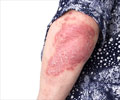Information about Delafloxacin
Generic Name : DelafloxacinUp-to-date prescription details regarding Delafloxacin are provided here.
Pronunciation : DEL-a-FLOX-a-SIN
Learn the correct pronunciation of the Delafloxacin, understand it's uses, recommended dosages, its indications, how to take, when to take, when not to take, side effects, special precautions, warnings and its and its storage instructions.You will also find a list of the medication's International and Indian brand or trade names, as well as its pricing information. For verification of the information presented on this page or for additional clarifications, it's advisable to consult your doctor.
Therapeutic Classification : Anti- Bacterials
Trade Names/Brand Names of Delafloxacin
India :
Baxdela
Overview of Delafloxacin
• Delafloxacin is a fluoroquinolone antibacterial agent which is used to treat bacterial skin infection in adults. It was approved by the US FDA in June 2017.Why is Delafloxacin Prescribed? (Indications)
Delafloxacin is prescribed to treat adult patients suffering from acute bacterial skin and skin structure infections (ABSSI) which are caused by susceptible gram-positive and gram-negative organisms.It acts by killing the bacteria that is responsible for causing the infections.
When should Delafloxacin not be taken? (Contraindications)
Delafloxacin should not be used in patients with the following conditions-• Allergy or known hypersensitivity to delafloxacin drug
• Viral infections such as common cold or flu
• Known history of myasthenia gravis
• Nerve disorders such as peripheral neuropathy
• Seizures or any existing head injury
• End-stage kidney disease
• Tendonitis or arthritis
• Children less than 18 years, during pregnancy and breastfeeding
What is the dosage of Delafloxacin?
Adult Dose:• The recommended adult dose of delafloxacin can be chosen from the below depending on the severity of the infection:
a) Delafloxacin injection of 300mg twice daily over 1 hour by intravenous infusion for a period of 5 to 14 days.
Or
b) Delafloxacin injection of 300mg twice daily over 60 minutes by intravenous infusion and then to switch to 450mg tablet orally twice a day for a total period of 5 to 14 days.
Or
c) Tablets of 450mg of delafloxacin to be taken orally twice daily for a period of 5 to 14 days.
Dose adjustment in patients with renal impairment:
• No dose adjustment is required in patients with an estimated glomerular filtration rate (eGFR) of 30-89 mL/min/1.73m2.
• In patients with an eGFR 15-29 mL/min/1.73m2, 200mg of delafloxacin injection can be given intravenously twice daily or the 200mg injection twice daily can be switched to 450 mg tablet orally twice a day to complete the course of the treatment.
• Delafloxacin injection and tablets are not recommended in patients with end-stage renal disease including hemodialysis patients.
How should Delafloxacin be taken?
• Delafloxacin comes in tablet form as well as in injection form.• The tablet can be taken as a whole with sufficient quantity of water without crushing or chewing.
• Tablets can be taken with food to minimise gastric discomfort.
Injection reconstitution and dilution:
• Delafloxacin injection should be reconstituted and diluted under aseptic conditions. Each 300mg vial can be reconstituted with either 5% dextrose or 0.9% sodium chloride and should be completely shaken by dissolving.
• The reconstituted solution should be diluted into an intravenous bag to obtain a total volume of 250 ml either with a 5% dextrose or 0.9% sodium chloride to achieve a concentration of 1.2 mg/ml before administration.
• It is necessary to inspect for the presence of any visible particles or discoloration of the parenteral solution prior administration.
• The total infusion time should be over 60 minutes.
What are the warnings and precautions for Delafloxacin?
• Delafloxacin should be used with caution in patients with rheumatoid arthritis as delafloxacin is associated with the risk of tendinitis and tendon rupture.• Patients are advised to report to the physician when they experience symptoms of peripheral neuropathy such as loss of sensation, pain, burning, tingling sensation or numbness, particularly in diabetics.
• Delafloxacin should be used cautiously in patients with brain disorders because it may induce or aggravate the existing central nervous system effects (convulsions, hallucination, depression, agitation, nightmares, anxiety, increased intracranial pressure or suicidal thoughts)
• Patients should be monitored for muscle weakness as delafloxacin may worsen myasthenia gravis.
• Allergic reaction or Clostridium difficile associated diarrhea are reported in patients on delafloxacin therapy and should be treated accordingly.
• Delafloxacin should be discontinued when severe adverse effects occur during the therapy and patients should be monitored regularly.
What are the side effects of Delafloxacin?
Gastrointestinal: Nausea, pain in the abdomen, vomiting, diarrheaCardiovascular: Palpitations, alterations in heartbeat, fluctuations in blood pressure
Central nervous system: Headache, anxiety, dizziness, vertigo, insomnia, abnormal dreams, confusion, suicidal thoughts
Infections: Clostridium difficile infection, oral or vulvovaginal candidiasis
Skin and Peripheral Nerves: Rash, itching, infusion-site reactions, redness, paresthesia
Others: Muscle pain, fluctuations in blood sugar level, increased blood levels of liver enzymes, creatinine or creatinine phosphokinase, kidney damage or failure, inflammation of tendons, tendon rupture, exacerbation of myasthenia gravis, allergic reaction
What are the other precautions for Delafloxacin?
• Delafloxacin should be used only in the presence of a strong susceptible bacterial infection to avoid the risk of developing a drug-resistant bacteria.• If a dose is missed, take the missed dose if you still have at least 8 hours to go before your next dose. If you have to take the next dose in less than 8 hours, skip the missed dose and take the next dose at the scheduled time.
• Take the exact dose as directed by the physician.
What are the Drug Interactions of Delafloxacin?
• Antacids containing aluminum, magnesium or sucralfate should not be taken along with delafloxacin tablets as they may interfere with the absorption of delafloxacin.• Multivitamin preparations with iron or zinc also reduce the absorption of delafloxacin tablets by forming chelating complexes.
• Formulations such as didanosine buffered tablets should be avoided with delafloxacin because of the reduced absorption of delafloxacin when taken together.
• Delafloxacin injection should be administered into a separate intravenous line. When the same intravenous line is used as for other drugs, it is necessary to flush the intravenous line either with 5% dextrose or 0.9% sodium chloride before and after delafloxacin is administered.
What are the storage conditions for Delafloxacin?
• Delafloxacin tablets and injections should be stored at a room temperature (20°C to 25°C).• Keep away from excess light and moisture. Keep out of the reach of children.
• The reconstituted vials or diluted intravenous bag must be stored either in a refrigerator at 2°C to 8°C or at a room temperature between 20°C to 25°C but not for more than 24 hours.
• The reconstituted or diluted portion should not be frozen. The unused portion after 24 hours should be discarded.











